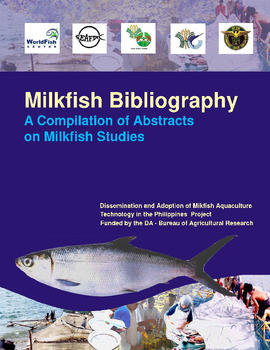Perlihatkan publikasi sederhana
Vibrio harveyi-like bacteria associated with fin rot in farmed milkfish Chanos chanos (Forsskal) fingerlings in the Philippines
| dc.contributor.author | Estante-Superio, Erish G. | |
| dc.contributor.author | Pakingking, Rolando V., Jr. | |
| dc.contributor.author | Corre, Valeriano L. | |
| dc.contributor.author | Cruz-Lacierda, Erlinda R. | |
| dc.date.accessioned | 2020-12-21T03:25:55Z | |
| dc.date.available | 2020-12-21T03:25:55Z | |
| dc.date.issued | 2021-03 | |
| dc.identifier.citation | Estante-Superio, E. G., Pakingking, R. V., Corre, V. L., & Cruz-Lacierda, E. R. (2021). Vibrio harveyi-like bacteria associated with fin rot in farmed milkfish Chanos chanos (Forsskal) fingerlings in the Philippines. Aquaculture, 534, 736259. https://doi.org/10.1016/j.aquaculture.2020.736259 | en |
| dc.identifier.issn | 0044-8486 | |
| dc.identifier.uri | http://hdl.handle.net/10862/6018 | |
| dc.description.abstract | Milkfish (Chanos chanos) is a commercially important species widely cultured and consumed in the Philippines. It is a hardy fish but due to culture intensification, occurrence of bacterial disease is inevitable. The causative agent of fin rot disease in milkfish fingerlings (total length [TL] = 2.8–4.5 cm) reared in intensive nursery earthen ponds in the Philippines was investigated in the current study. Following biochemical characterization tests and 16S rRNA sequencing, seven isolates recovered from affected fish were identified as Vibrio harveyi-like bacteria. Immersion challenge of milkfish (TL = 5.64 ± 0.76 cm) using a representative strain (CCL-01) at inoculum dose of 108 CFU/mL resulted in fin rot as early as 1-day post-infection (dpi) and concomitant mortalities of 57% ± 0.58 at 7 dpi. Moreover, when milkfish (TL = 6.18 ± 0.66 cm) stocked at 5, 10, and 20 fish/5 L were exposed to the computed 168-h lethal dose (LD50) at 6.63 × 104 CFU/mL, significant mean mortality of 45% ± 1.0 coupled with typical signs of fin rot were particularly obtained in fish stocked at 20 fish/5 L (biomass = 4 g/L) while low mortality of 0% and 7% ± 0.58 were recorded in fish stocked at 5 fish/5 L and 10 fish/5 L, respectively, at 7 dpi. Vibrio harveyi-like bacteria was reisolated in lesions and kidney of all challenged fish while none in any of the control fish. The current data clearly indicate that the isolated V. harveyi-like bacteria is an opportunistic pathogen capable of instigating disease epizootics in milkfish fingerlings stocked at higher densities. | en |
| dc.description.sponsorship | This study was funded by the Department of Science and Technology through the Philippine Council for Agriculture, Aquatic and Natural Resources Research and Development (PCAARRD) under the UPV-DOST Milkfish Program A. Also, Oversea Feeds Corporation, SEAFDEC Aquaculture Department and Dr. Carlo Lazado are greatly acknowledged for the milkfish samples, use of the research facilities and valuable inputs in editing an earlier draft of the paper, respectively. | en |
| dc.language.iso | en | en |
| dc.publisher | Elsevier | en |
| dc.subject | Chanos chanos | en |
| dc.subject | Fin rot | en |
| dc.subject | milkfish | en |
| dc.subject | pathogenicity | en |
| dc.subject | Philippines | en |
| dc.title | Vibrio harveyi-like bacteria associated with fin rot in farmed milkfish Chanos chanos (Forsskal) fingerlings in the Philippines | en |
| dc.type | Article | en |
| dc.identifier.doi | 10.1016/j.aquaculture.2020.736259 | |
| dc.citation.volume | 534 | |
| dc.citation.spage | 736259 | |
| dc.citation.journalTitle | Aquaculture | en |
| dc.subject.asfa | overcrowding | en |
| dc.subject.asfa | vibriosis | en |
| dc.subject.asfa | milkfish culture | en |
| dc.subject.asfa | aquaculture | en |
| dc.subject.asfa | fingerlings | en |
| dc.subject.asfa | stocking density | en |
| dc.subject.asfa | Bacteria | en |
| dc.subject.asfa | taxonomy | en |
| dc.subject.scientificName | Chanos chanos | |
| dc.subject.scientificName | Vibrio harveyi | en |
Files in this item
| Files | Size | Format | View |
|---|---|---|---|
|
There are no files associated with this item. |
|||
Publikasi ini ada di koleksi berikut
-
Journal Articles [1256]
These papers were contributed by Department staff to various national and international journals.



